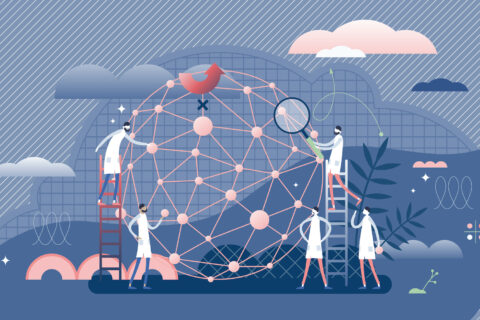The customer comes first. That is not a hierarchical claim nor a chronological one, implying the needs of the customer must be met before those of anyone else. Rather, “the customer comes first” is a phrase which embodies the inherent purpose of doing good business, especially as a luxury provider.
At the end of the day, providing customers with a valued experience is the core function which any company serves—and none more so than purveyors of luxury. As such, pursuing opportunities which elevate that experience should be a luxury provider’s highest priority.
This is precisely why brands around the world have been eyeing the development of artificial intelligence (AI) technologies throughout recent years. AI’s growing ability to learn quickly and predict accurately means that, more so than ever before, the complex demands of customer-interaction can be scaled, automated, and expedited to the benefit of producers and consumers alike.
With this in mind, the years ahead are poised to see widespread adoption of the already-present use of AI for this purpose. Below are a few brief insights as to what such a development might look like, as well as an introductory guide for luxury brands who intend to stay at the forefront of customer experience in the light of a new year.
The concierge and the customer
The first and most commonly considered aspect of customer experience concerns direct interaction with the customer. At this level, customer experience revolves around two values: convenience and distinction. That is, customers want an experience which is as ideal to their unique needs and desires as possible, and they want it as quickly and as frictionlessly as possible. It is a tall order, no doubt, but one which AI was all but built to fulfill.
If one revisits the core virtues of AI—learning and predicting—it soon becomes evident why it will be such a critical tool going forward. Correctly employed, AI is able to collect and retain extensive amounts of data about every customer, compiling detailed and accurate profiles for long-term safekeeping. It can then use that information to make highly educated predictions about what the unique needs and desires of a given customer actually are, so that it can recommend and even create options accordingly.
Practically speaking, the applications of such technologies are as diverse as business itself. Companies in every field are providing increasingly sophisticated chat-bots to remotely resolve complex issues without the need for staff intervention, reducing wait times and increasing customer satisfaction. Luxury hospitality brands like Hilton are already using AI to streamline the check-in process and provide in-room guest services. Car manufacturers like Audi are also using AI to generate and simulate customized models for their customers within the comfort of their homes. These, and countless other examples already in motion, offer but a glimpse into what AI holds for the near future of customer-company interaction.
The concierge and back-of-house
Customer experiences do not end with customer interactions, however, and are most often built upon systems with which the customer will likely never interact directly. On this level, companies must focus on making the experiences they provide available as efficiently as possible, eliminating overhead and minimizing risk so that the customer is presented with an accessible, dependable, and low-risk experience. And, since analysis and prognosis are its strong-suits, it should come as no surprise that AI is once again a match for the task.
First in this category is operational efficiency. Operational efficiency tends to run hand-in-glove with customer interaction, because the internal speed and efficiency with which a brand is able to deliver high standards of customer service generally determines the quality of a customer’s experience. Some of the uses for AI discussed in the first part therefore apply here also—such as chat-bots optimizing workload by freeing up staff for higher-order tasks. Beyond that, AI can be used as a planning tool to predict future obstacles and ensure consistent service, such as hotels scheduling additional personnel when inclement weather and delayed flights are likely to increase demand, for instance.
Second, there is risk management. Here, AI uses the same technology which can effectively predict desirable outcomes to pinpoint and highlight undesirable ones. This can take the form of physical safety, such as on-premises sensors within a common space—such as a pool—which can detect erratic movements and alert associates of potential danger. It could also mean improved cybersecurity, providing advanced encryption of customer data or detecting potentially fraudulent actions that could cause slowdowns or breaches. Together, these measures help to ensure that customers have stress-free access to the experience a luxury brand offers.
Final thoughts
Customer experience is a facet of luxury concerned first and foremost with people, and the resultant complexity of the task makes it a persistent challenge for brands of every shape and size. It is no wonder, then, that customer experience is also among the areas of business for which artificial intelligence holds the most drastic change in store.
From virtual conversations to exhaustive safety measures, few aspects of customer experience are likely to escape its impact. It is time for luxury brands around the world to decide just what AI will mean for their customers, both for next year and for the many years to follow.
Chief Outsiders CMO Anka Twum-Baah works with CEOs at financial services, technology, SaaS, hospitality and retail companies to drive topline growth, scale, and product differentiation through integrated marketing programs, analytics, and holistic go-to-market strategies.
© YFS Magazine. All Rights Reserved. Copying prohibited. All material is protected by U.S. and international copyright laws. Unauthorized reproduction or distribution of this material is prohibited. Sharing of this material under Attribution-NonCommercial-NoDerivatives 4.0 International terms, listed here, is permitted.














